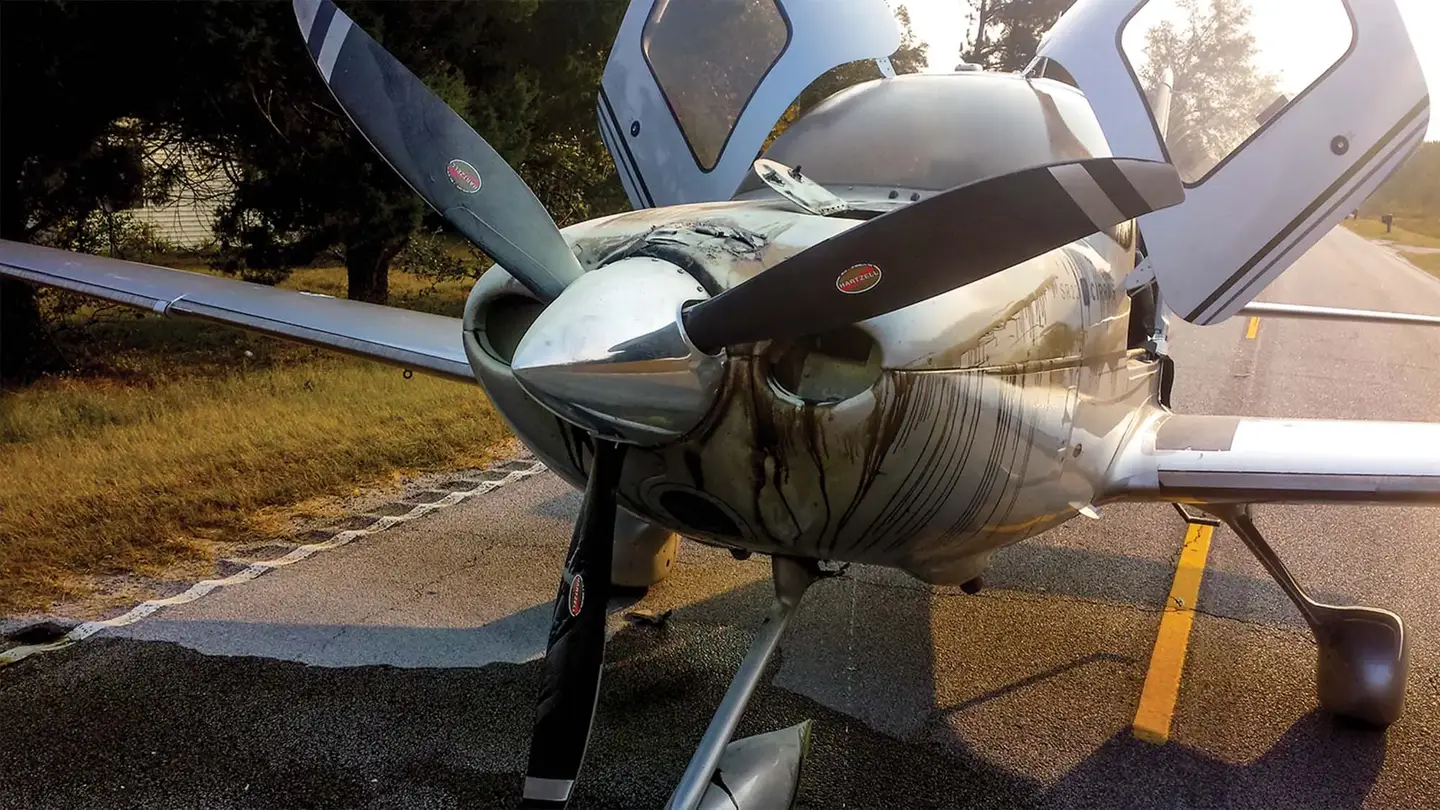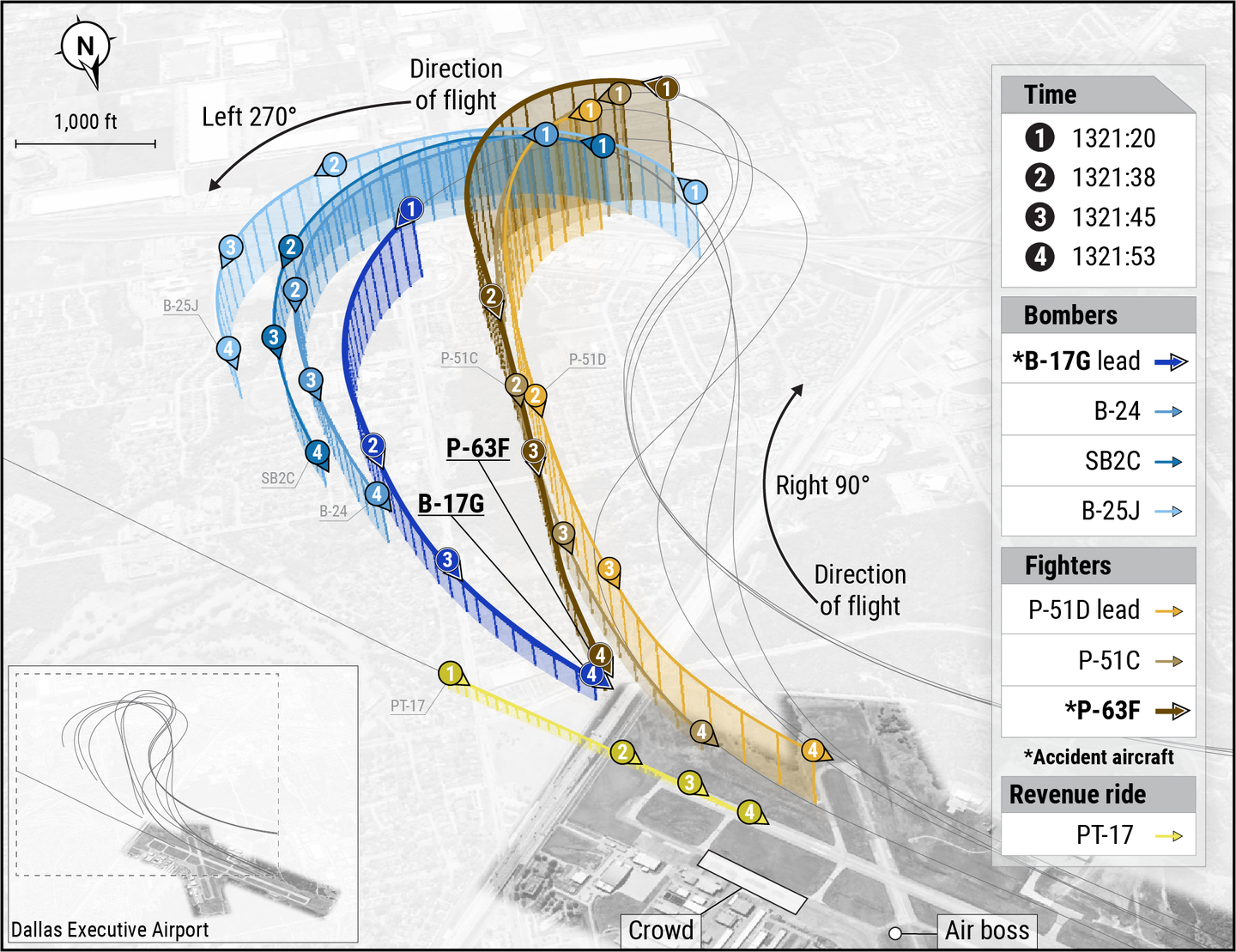General Aviation Accident Bulletin
AVweb’s General Aviation Accident Bulletin is taken from the pages of our sister publication, Aviation Safety magazine. All the reports listed here are preliminary and include only initial factual findings…

Aviation Safety Accident Bulletin
AVweb's General Aviation Accident Bulletin is taken from the pages of our sister publication, Aviation Safety magazine. All the reports listed here are preliminary and include only initial factual findings about crashes. You can learn more about the final probable cause on the NTSB's website at www.ntsb.gov. Final reports appear about a year after the accident, although some take longer. Find out more about Aviation Safety at www.aviationsafetymagazine.com.
February 6, 2020, Chatham, LA
Cessna 182T Skylane
The airplane was destroyed when it impacted a parking area at about 1413 Central time. The commercial pilot and two passengers aboard sustained fatal injuries. Marginal visual conditions prevailed; an IFR flight plan was in effect.
While en route at 6000 feet MSL, the pilot told ATC he was encountering rime ice and requested a lower altitude. At about 1350, ATC cleared the airplane to 4000 feet, then to 3000. The pilot then diverted to a nearby airport and was vectored to its GPS approach. Radar contact was lost prior to the airplane reaching the initial approach fix. Preliminary ADS-B data showed the airplane’s ground speed slowing and a rapid descent before contact was lost. The airplane impacted the ground in a near-vertical nose-down attitude.
Several other aircraft in the area reported ice at various altitudes near the accident location. The closest weather observation included an overcast ceiling at 1100 feet overcast, with a temperature of 2 degrees C and a dew point of -1 degrees C.
February 8, 2020, Granbury, Texas
Beech F33A Bonanza
At about 1315 Central time, the airplane was substantially damaged when it impacted trees and terrain. The solo private pilot was fatally injured. Visual conditions prevailed.
A review of recorded ADS-B data revealed the airplane approached from the northwest and overflew Runway 14 at 900 feet AGL, then turned right toward the northwest on a wide downwind leg, gradually descending to about 400 feet AGL. The final data point was at 13:05:07, at about 440 feet AGL and 93 knots groundspeed. The accident site was 2.32 nm north-northwest of the final recorded ADS-B location, and 3.75 nm northwest of the destination airport.
Examination of the wreckage revealed the fuel selector was positioned to the left main tank, and there was evidence of fuel aboard at the accident site. The flaps were retracted during the impact and the landing gear were extended. Two of the propeller blades remained attached to the hub; one blade was mostly straight and unremarkable. The other was bent slightly forward. The third blade was found under the engine and was bent aft about mid-span. This blade also exhibited scratches and superficial damage.
February 8, 2020, Fairmount, GA
Cessna 501 Citation I/SP
The airplane was substantially damaged when it broke up inflight at about 1013 Eastern time. The private pilot, commercial pilot and two passengers were fatally injured. Instrument conditions prevailed; the flight operated on an IFR flight plan. The airplane was topped off with 104 gallons of Jet A fuel prior to departing on the accident flight.
Shortly after takeoff, the flight was cleared to 7000 feet MSL and was issued a PIREP for trace to light rime icing between 9000 and 11,000 feet. The controller instructed the pilots to climb to 10,000 feet and turn right to a 020-degree heading. Soon, the crew told ATC they had a problem with the autopilot. After a series of heading and altitude excursions, during which the crew reported they were “playing with the autopilot,” the jet was cleared to 16,000 feet and a 360-degree heading. About that point, the crew advised ATC they had a problem with the pilot-side attitude indicator and that they were using the copilot’s. The controller asked if they were above clouds as they were climbing through 15,400 feet. The airplane then began a left turn and radar contact was lost at 1013. The controller attempted numerous times to contact the airplane, with no response.
The main wreckage came to rest inverted. Several parts of the airplane were found in the wooded area surrounding the main wreckage, along a debris path extending about 7000 feet on a 005-degree heading. The outboard eight feet of the right wing was separated and located along the debris path, as were the horizontal stabilizers and elevators, and parts of the rudder and vertical stabilizer.
February 9, 2020, Fort Smith, Ark.
North American Navion G
At about 1500 Central time, the airplane impacted terrain during a forced landing. The pilot and two passengers sustained minor injuries; one passenger sustained serious injuries. The airplane was substantially damaged.
According to the pilot, shortly after takeoff and at about 300 feet AGL, the engine lost partial power. The pilot lowered the nose and the engine continued to operate. Shortly thereafter, the engine lost total power. The pilot activated the electric fuel boost pump and engine power resumed; however, the engine lost power again within a few seconds. The pilot executed a forced landing to a grassy area on airport property.
Examination revealed there was no fuel found in any fuel lines or components from the firewall forward to the engine. About 20 gallons of fuel were removed from the airplane fuel tanks during recovery. Vacuum tests were performed on the fuel selector valve in accordance with a factory service bulletin and an airworthiness directive (AD). The fuel selector failed the tests, and should have been repaired or replaced, per the AD.
February 12, 2020, Benbrook, Texas
Cessna 560 Citation Encore
The airplane was substantially damaged at about 1527 Central time when two sections of the right engine cowling departed the airplane in-flight. The airline transport pilot and the passenger were not injured. Visual conditions prevailed.
As the airplane climbed through FL225, the pilot heard a “loud crashing noise” followed by a “turbulent air sound” he described as similar to flying with extended landing gear. Coordinating with ATC, the pilot reduced speed and descended to 11,000 feet MSL. After cycling the landing gear and the flaps, and testing the flight controls, the pilot found everything normal except for the noise, which was exacerbated by rudder movement. After diverting to the nearest suitable airport, the pilot landed at 1545 without further incident.
Examination revealed sections of the right engine’s top and bottom cowling were missing. Part of the separated cowling was wrapped around the inboard section of the right horizontal stabilizer and another portion was embedded between the leading edge of the vertical stabilizer and the top of the fuselage. The last maintenance work performed on the right engine occurred 153.6 flight hours prior to the accident.
This article originally appeared in the May 2020 issue of Aviation Safety magazine.
For more great content like this, subscribe to Aviation Safety!






